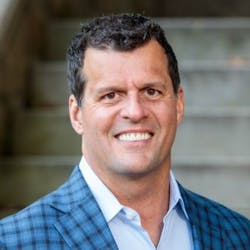The impact of change is like looking at a current picture of ourselves 10 years from now compared to seeing that face in the mirror each and every day.
We don’t see things different in the slow roll of time and then suddenly we hardly can believe the change. The days crawl and the years fly and we hardly recognize the new from the old.
The energy transition is like that. Some longtime leaders, like Quanta Technology’s Wayne Bishop, see it as a more of a transformation than a day-to-day gradual change.
“There are more changes coming over 10 years when we’ve seen in the previous 100 years,” said Bishop, who also is chair of the upcoming IEEE Power & Energy Society (PES) Grid Edge Technologies Conference. The event, which is happening Jan. 21-23 in San Diego, will cover nearly all facets of that transformation, from decarbonization to distributed energy and new technologies remaking the face of the grid.
“To me, the IEEE PES Grid Edge Conference really hits on all of the exciting topics the industry is seeing in this energy transformation we are undergoing,” Bishop, who is Quanta’s vice president for industry outreach and strategy, pointed out.
The event will feature more than 100 panels focused on various fronts making up the future of electricity generation and delivery. Speakers will represent multiple sectors from within and outside the electricity equation, from Sandia National Laboratory to Quanta, Oncor Electric Delivery, Hitachi Energy, Southern Co., New York Power Authority, Cornell University, Tata Motors, Siemens, Nokia, and host utility San Diego Gas & Electric. The latter is known for trying out newer projects involving renewables, energy storage and microgrids.
The content around IEEE PES Grid Edge is also not America-centric. Representatives from European companies and grid technology will participate and talk about lessons learned over the pond.
“There is a global perspective on decarbonization through electrification,” Bishop said. “The point of that panel is that we’re not going it alone. We in the U.S. want to learn what other countries are doing. We don’t want to relearn the wheel here.”
Tech giants such as Microsoft also will be participating, discussing the energy challenges in the growing era of artificial intelligence and cloud-based capacity growth. Fleet electrification and microgrids to support EV infrastructure will be on the IEEE PES Grid Edge agenda.
Click here to see the full agenda on IEEE PES Grid Edge Technology Conference.






